Abstract
Results of 5 years of sampling for Bulinus rohlfsi in human-water contact sites of villages along the Volta Lake, Ghana, have confirmed that the aquatic macrophyte, Ceratophyllum, is the most important ecological factor for sustaining high levels of cercarial transmission of Schistosoma haematobium. Data available so far indicate that growth of this weed largely determines the size of the snail populations. Increasing density of Ceratophyllum correlates with increasing levels of cercarial transmission potential in the water contact sites and of S. haematobium infection in the village populations.
Full text
PDF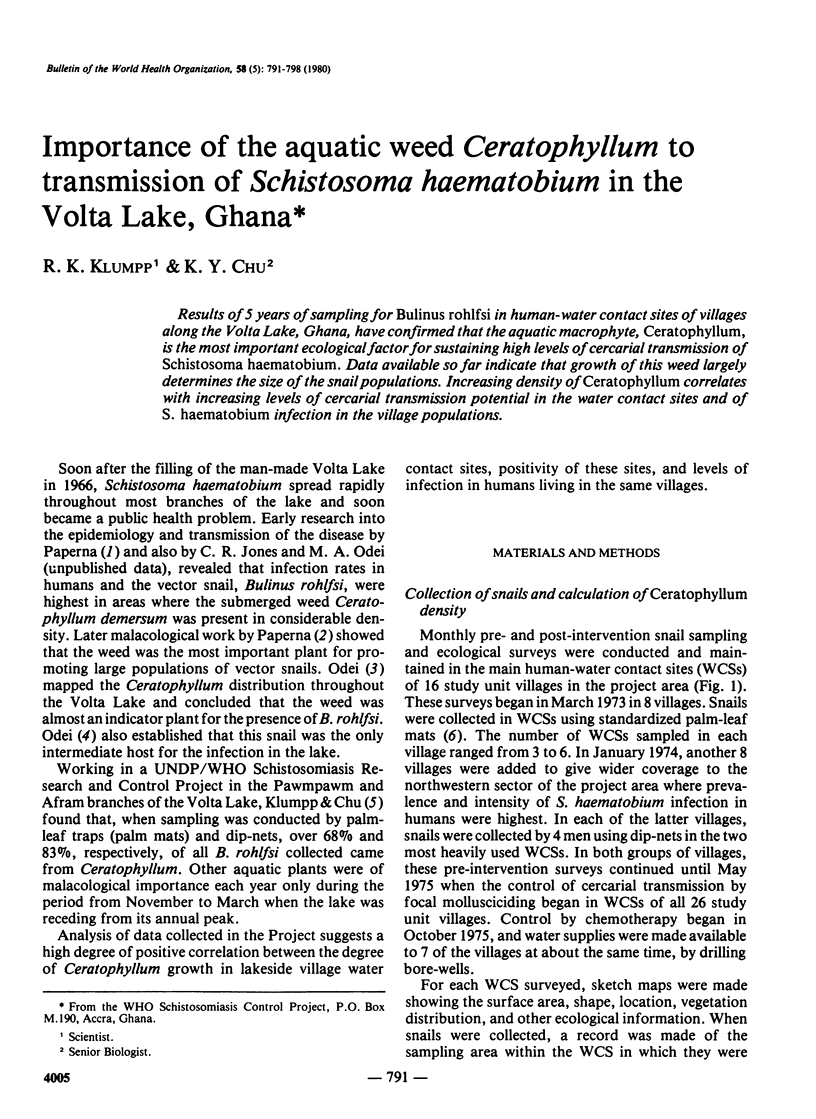
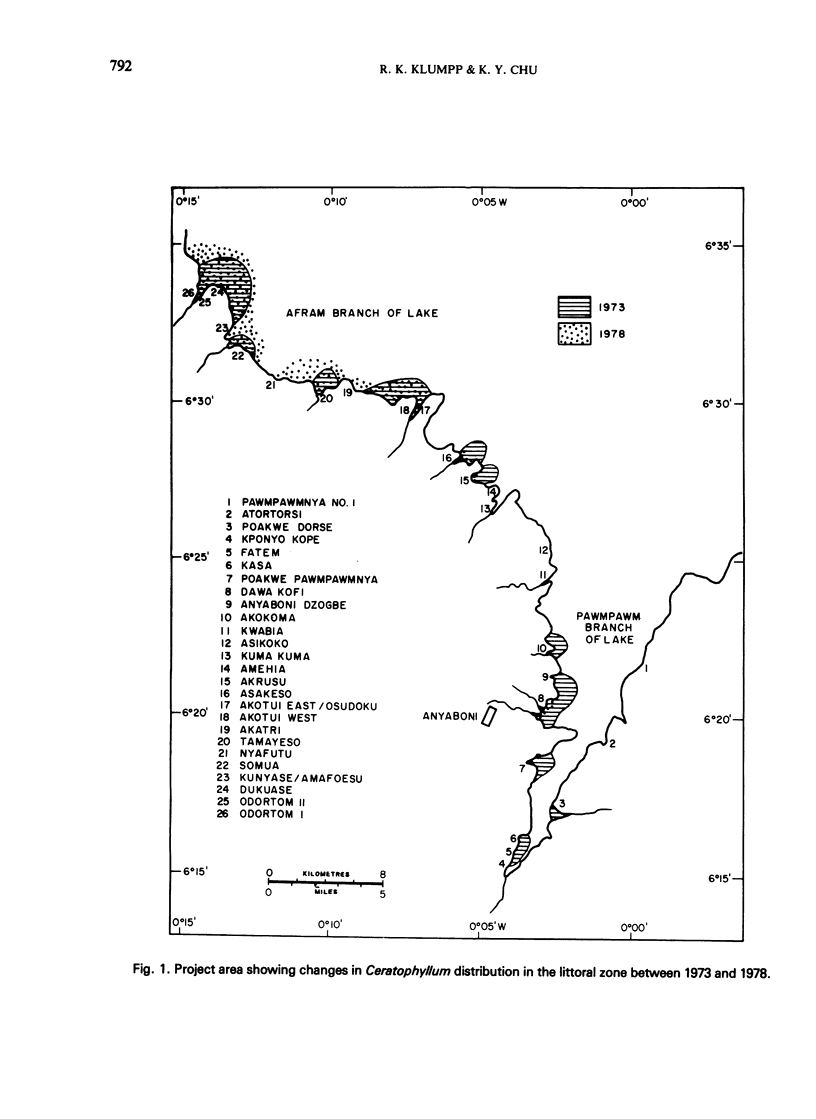
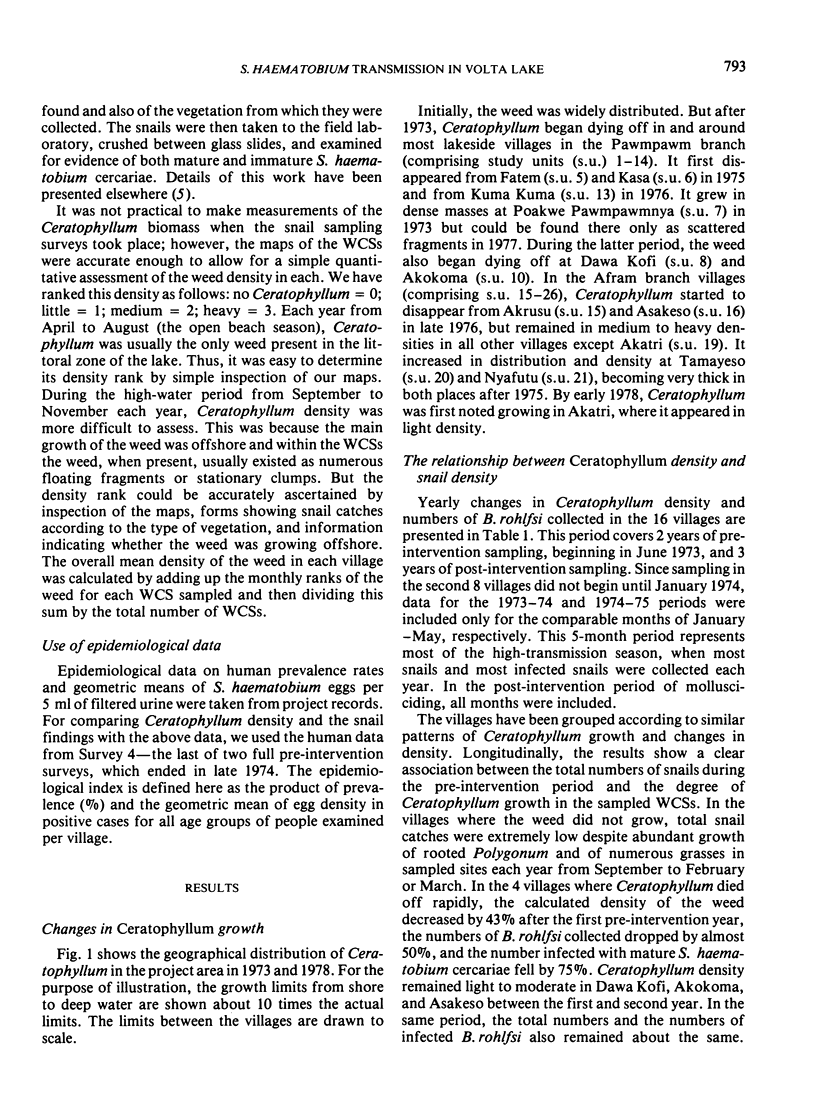
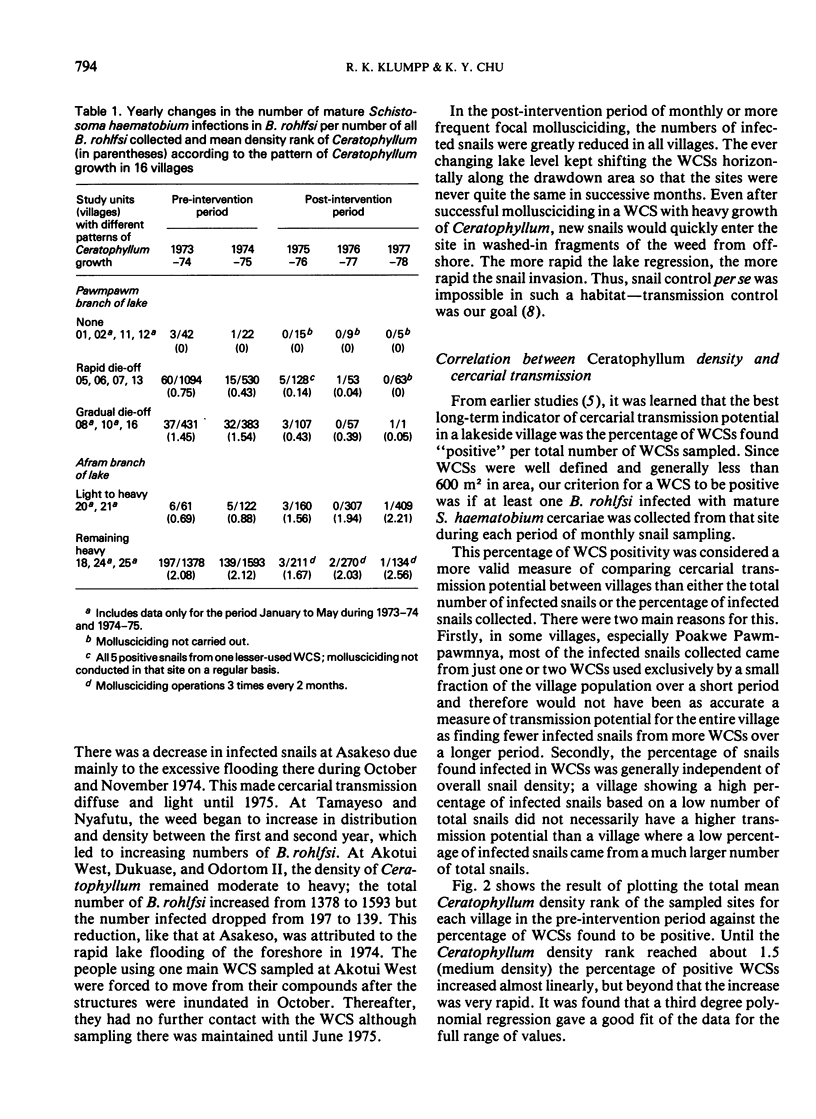
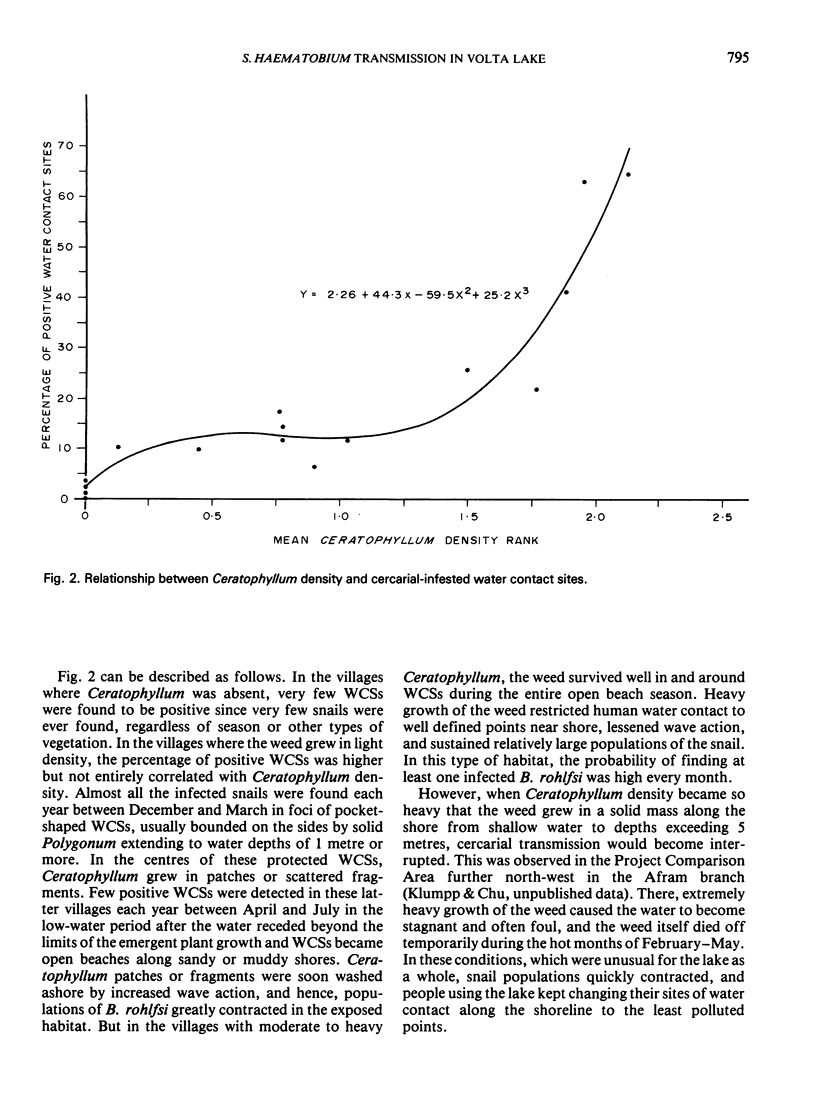
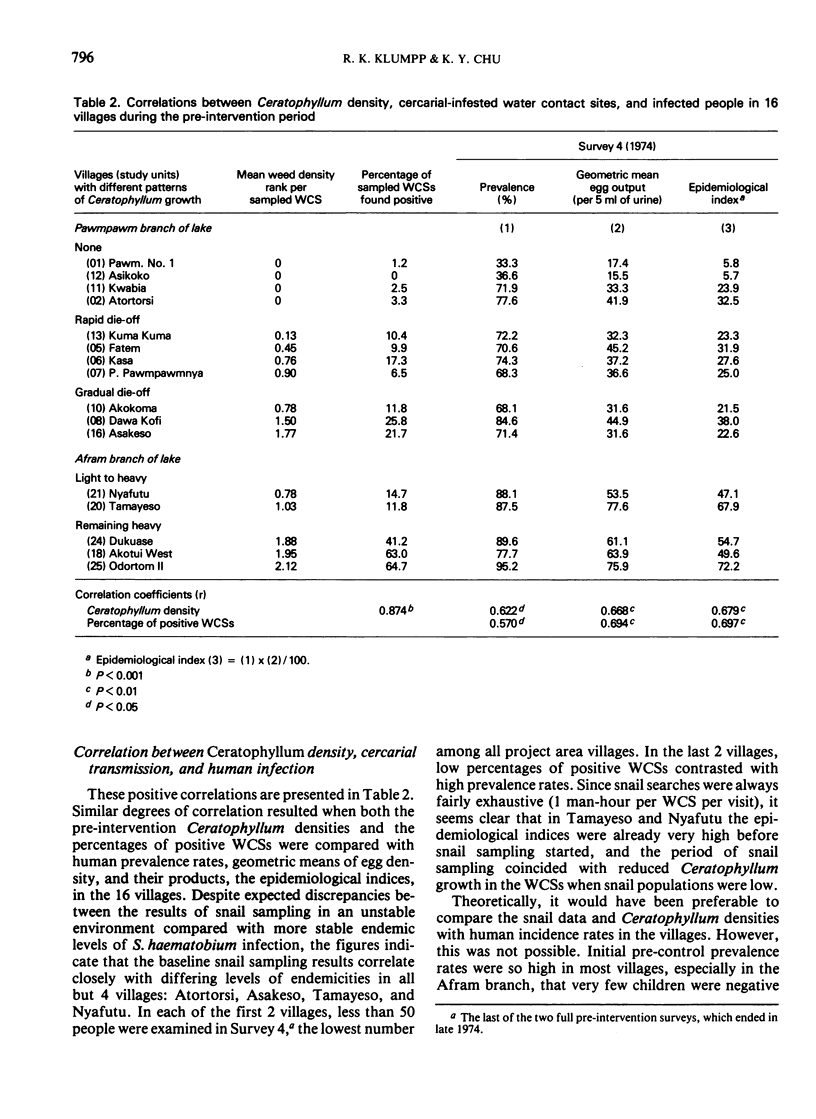
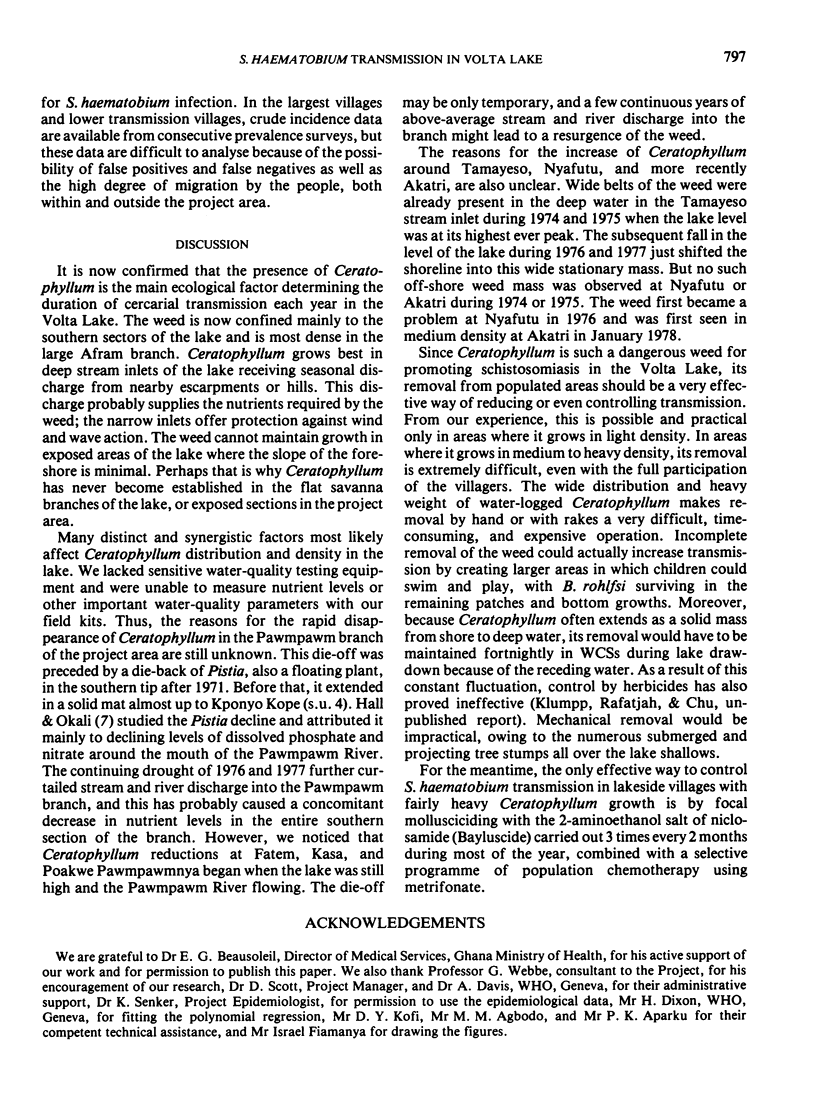
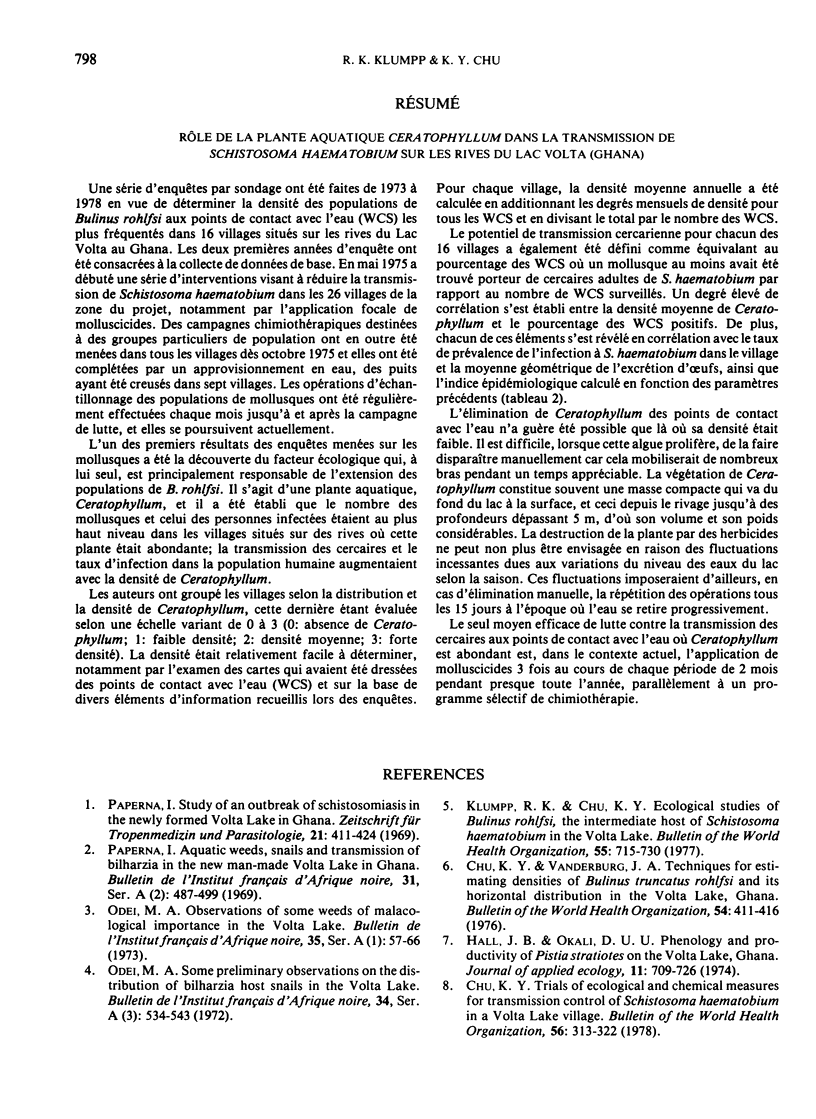
Selected References
These references are in PubMed. This may not be the complete list of references from this article.
- Chu K. Y. Trials of ecological and chemical measures for the control of Schistosoma haematobium transmission in a Volta Lake village. Bull World Health Organ. 1978;56(2):313–322. [PMC free article] [PubMed] [Google Scholar]
- Chu K. Y., Vanderburg J. A. Techniques for estimating densities of Bulinus truncatus rohlfsi and its horizontal distribution in Volta Lake, Ghana. Bull World Health Organ. 1976;54(4):411–416. [PMC free article] [PubMed] [Google Scholar]
- Klumpp R. K., Chu K. Y. Ecological studies of Bulinus rohlfsi, the intermediate host of Schistosoma haematobium in the Volta Lake. Bull World Health Organ. 1977;55(6):715–730. [PMC free article] [PubMed] [Google Scholar]
- Paperna I. Study of an outbreak of schistosomiasis in the newly formed Volta lake in Ghana. Z Tropenmed Parasitol. 1970 Dec;21(4):411–425. [PubMed] [Google Scholar]


